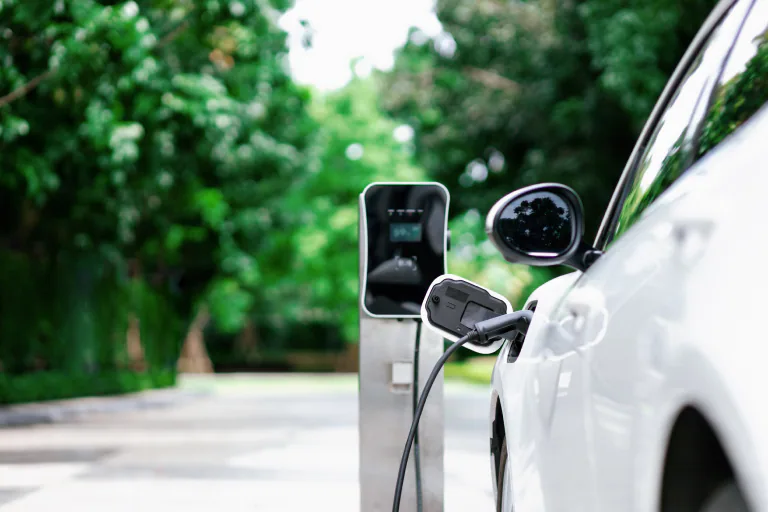The electric vehicle (EV) landscape is undergoing a seismic shift in 2024, driven by groundbreaking charging innovations that are set to revolutionize EV accessibility. According to Bloomberg Green, the global EV market is projected to reach over 50 million units by 2030. As EV adoption accelerates, the demand for efficient and accessible charging solutions has never been more critical. In this article, we’ll explore how the latest charging technologies are transforming the EV landscape, improving convenience, and what this means for the future of sustainable mobility.
The Rise of Ultra-Fast Charging Stations
Accelerating Charging Speeds with Ultra-Fast Chargers
In 2024, one of the most significant advancements in EV charging is the rise of ultra-fast charging stations. Companies like Tesla and Ionity are leading the charge with stations capable of delivering up to 350 kW, dramatically reducing charging times. For instance, a Tesla Model 3 can recharge up to 80% in just 15 minutes at these stations. This innovation not only reduces waiting times but also enhances the practicality of long-distance EV travel.
- Key Benefits:
- Reduces charging time to under 20 minutes for most EVs
- Expands the feasibility of road trips with electric vehicles
- Encourages broader adoption by alleviating range anxiety
Expanding the Charging Network
Simultaneously, the global charging infrastructure is expanding at an unprecedented pace. According to Reuters Mobility, there has been a 40% increase in the number of public charging stations worldwide in 2023 alone. Brands such as Volkswagen and Hyundai are investing heavily in charging networks, ensuring that drivers have easy access to charging points, whether in urban centers or rural areas.
Innovative Home Charging Solutions
Smart Home Chargers: A New Era of Convenience
Home charging technology is also seeing remarkable advancements. Smart chargers, which integrate with home energy systems, allow EV owners to optimize charging based on electricity tariffs and renewable energy availability. TechCrunch notes that these systems can reduce charging costs by up to 30% by timing charges during off-peak hours.
- Features of Smart Chargers:
- Real-time energy monitoring
- Integration with solar panels and home battery systems
- Remote control via mobile apps
Wireless Charging: Cutting the Cords
Another exciting development is the advent of wireless charging technology for EVs. Companies like WiTricity and Plugless are piloting systems that allow drivers to charge their vehicles simply by parking over a charging pad. MIT Technology Review highlights that these systems can achieve up to 90% efficiency, making them nearly as effective as traditional plug-in chargers.
Public and Private Sector Collaboration
Government Initiatives and Incentives
Governments worldwide are recognizing the importance of a robust charging infrastructure and are introducing incentives to promote its growth. The International Energy Agency (IEA) reports that government-backed programs are providing substantial subsidies for the installation of public charging stations and home charging units.
- Examples of Initiatives:
- Tax credits for installing home charging stations
- Grants for businesses to install workplace chargers
- Investment in public charging infrastructure in underserved areas
Private Sector Partnerships
Private companies are also playing a vital role in expanding EV charging accessibility. Partnerships between automakers and energy providers are resulting in innovative solutions, such as Rivian’s Adventure Network, which aims to provide extensive coverage in national parks and remote destinations, catering to eco-conscious travelers.
Practical Tips for EV Owners
How to Maximize Charging Efficiency
- Plan Charging Stops: Use apps like PlugShare or ChargePoint to find available stations along your route.
- Optimize Home Charging: Schedule charges during off-peak hours to save on energy costs.
- Explore Incentives: Check local and federal incentives for installing home chargers or using public networks.
Where to Buy Charging Equipment
For those interested in purchasing home charging equipment, retailers like Amazon and specialized stores such as EVSE offer a wide range of products. Compare features, such as power rating and connectivity options, to find the best fit for your needs.
Conclusion: The Future of EV Charging
In summary, the charging innovations of 2024 are setting the stage for an era where electric vehicles are as convenient and accessible as traditional cars. From ultra-fast chargers to smart home solutions and wireless technology, these advancements are crucial in driving the transition to a sustainable future. As we look ahead, the continued collaboration between public and private sectors will be essential in ensuring that EV charging infrastructure keeps pace with the rapidly growing demand.
Are you ready to join the electric revolution? Share your thoughts on how these innovations will impact your journey towards sustainable living. With these cutting-edge technologies, the future of electric mobility is bright, efficient, and remarkably accessible.

